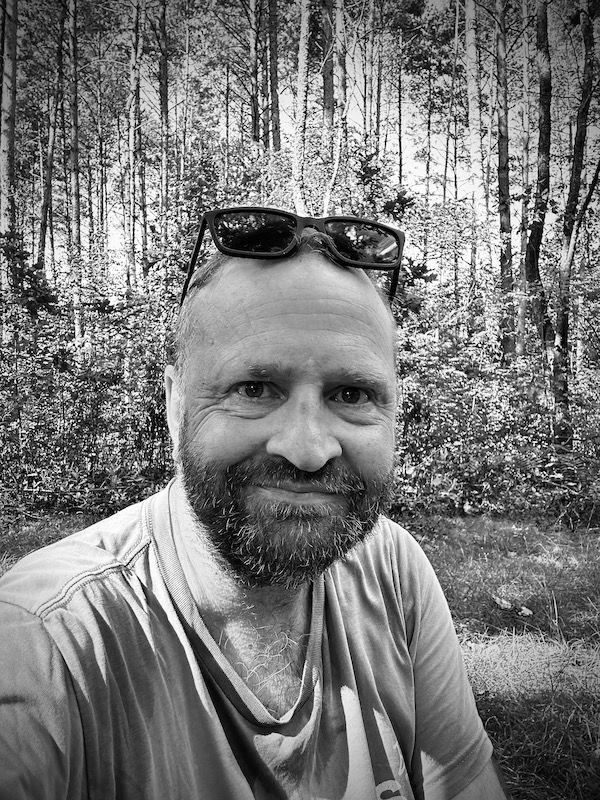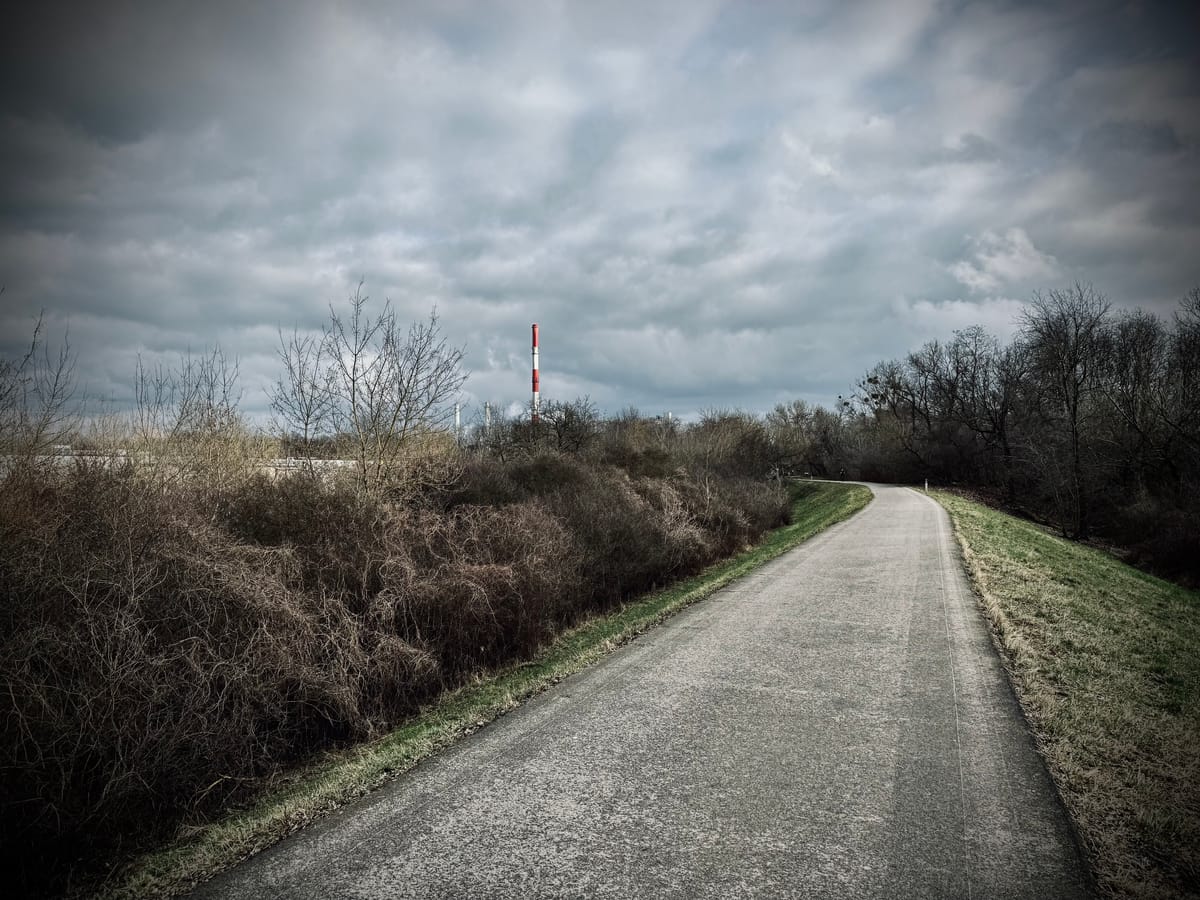Looking at my photo library. I'm astonished to see that it contains over 30,000 images. Nearly all are still. Moments captured in simple isolation. Cityscapes, architecture, details, selfies. You name it. Together, they capture a myriad of moods and emotions, times, places and intentions.
Then one day (I forget where) I saw a series of images captured as though stills, but actually, subtly, as movement. Timelapse, but gentle, not used for dramatic or gimmicky effect.
Movement, it seemed to me, that further intensified the emotion of the place. Movement that further portrayed a sense of what it mean to the artist to be in that place. At that time.
Still / Moving. The idea came to me immediately - to attempt to recreate this in some of the places I had been (and intended to revisit). Naturally, as is my wont, I chose some of the holocaust sites (mostly in Poland) to experiment.
These places hold such vivid memories. One can almost sense the past whispering, even shouting, as you walk there. The atmosphere can be paralysing. Images abound. Old maps spring into life.
Maybe a single image could be transformed? To visit these hallowed places is clearly "moving". In this short experiment, I want to pay homage to the past, and demonstrate that despite the passage of time, they are, indeed, still-moving.
The Footbridge of Memories.
Warszawa. Ul. Chłodna & Ul. Żelazna.
The bustling intersection of Chłodna and Żelanza in Warsaw, usually sings to the sounds of traffic and people heading to and from work. The Bridge of Sighs Memorial could easily be missed. A simple, yet poignant series of towers mark the location of the crossing point of the large and small wartime ghetto's.
This bridge was most famously portrayed in the film The Pianist. In its time, it represented a physical and metaphorical barrier for the condemned inhabitants of both ghetto's, that together occupied most of what is modern downtown Warsaw.
Capturing this place, late one Autumn morning, one is struck by the deceptive tranquility of the scene. Serene and calm. Take a moment to stop and listen, however, and the sounds of the past come flooding in.
The Footbridge of Memories.
The Jewish Cemetery.
Warszawa. Ul. Okopowa.
Throughout the existence of the Warsaw Ghetto, the Jewish citizens condemned to live there continued to bury their dead in the original, centuries old Jewish Cemetery.
Ramshackle and overgrown, sad, weeping poplars appear to caress the graves and the shoulders of the lonely visitor. It is a place for deep contemplation. The flickering flame on this grave represented, to me, a sign of life, of resilience and fortitude - a flame of hope amid the sadness.
The Jewish Cemetery.
Umschlagplatz.
Warszawa. Ul. Stawki.
Warsaw Umschlagplatz (Deportation Place) stands humbly isolated at the northern-most part of the ghetto. From here, hundreds of thousands of innocent people were forced to board cattle wagons en masse for deportation to the extermination camp at Treblinka, some 80km to the east.
A journey that today would take less than hour sometimes took several days, with thousands of victims dying en-route.
The Umschlagplatz Memorial stands as witness, as testimony to the ghetto liquidation. The same road passes by; some of the buildings remain and the same wind blows the leaves, scattering across this remarkable place.
Umschlagplatz.
Treblinka Death Camp.
Treblinka. Wólka Okrąglik.
Standing alone on the site of the Treblinka Extermination camp. A huge weight of emotion takes one's breath away. At every step you are reminded that beneath your feet lie the souls of some 900,000 innocent people. Men, women and children. Gassed, buried and burned in a production line of death.
I've visited Treblinka in all four seasons.
The birds do not sing in Treblinka. The only sound is the wind blowing calmly in the trees. As the clouds scurry across the sky they carry with them the memories, hopes and fears of those below.
Treblinka (01)
The site at Treblinka is tiny. Some 1.2km x 800m. The main memorial to the victims is surrounded by thousands of granite stones, each representing a town, village or hamlet from which those murdered were drawn.
Treblinka (02).
There are very few known images of the camp during it's two phases of operation. Those that do feature in a scrapbook belonging the last Camp Commandant, Kurt Franz, entitled "The Good Old Days".
Walking from the loading platform, along the "Road to Heaven" to the place of extermination is a devastating, but necessary experience, never to be forgotten.
Treblinka (03).
Fort IX
Kaunas; Lithuania
Lithuania suffered greatly during the war, suffering many of the most appalling war crimes committed by the Nazi state. The country is littered with memorials echoing these past atrocities to this very day.
Over 60,000 victims were murdered at Fort IX. I first visited the fort on a blistering summer day.
As I sat and filmed, locals and tourists alike walked hand in hand, rode bikes, smoked, laughed and bathed on the freshly cut grass of the site.
Behind their backs, the bullet holes in the execution walls seem to scream in angst and pain. The hopeful blue sky, dotted by clouds created a sinister juxtaposition the truth of this place.
Fort IX; Kaunas.
Paneriai
Vilnius; Lithuania
The local train from Vilnius to Paneriai stops alongside a few ancient, coloured but tattered wooden houses. Embroidered curtains move lazily in the breeze, shielding the inside from the burning sun.
During the war, the Nazis used Paneriai as an execution site. Over 100,000 innocent victims of Vilnius were herded into circular pits, shot and burned.
And all this less than 100m from the houses that remain today.
Paneriai is beautiful. Lush woodland, mossy grass and flowers compete with the misery held captive in its every fibre.
Paneriai.
A small number of prisoners were spared immediate execution. Forced to disinter the victims and to burn their mortal remains. Living in the same pits where they were worked to death.
But efficiency was important! The work should run like clockwork - in this final piece we see the purpose built mechanical ramp used to exhume the bodies from the pits.
Here it remains. A witness to a time when the forest at Paneriai knew only fear, terror, misery and death.
Paneriai: The Pits.
Authors Note
If you liked any of the above, you might also enjoy a short film I made on my experiences of visiting the holocaust sites: In_Fields.








